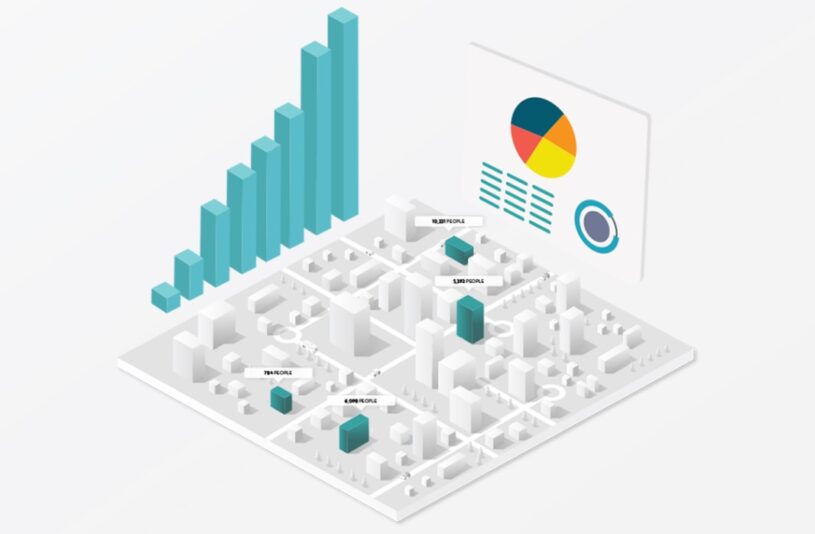In the digital age, large enterprises navigate a complex web of data flows critical to their operations. The efficient management of these traffic flows is pivotal for maintaining productivity, ensuring security, and maximizing performance. This article delves into strategies and solutions aimed at optimizing data traffic flow within large enterprises.
Understanding Data Traffic Flow
Data traffic flow encompasses the movement of information across a network, encompassing various data types, such as emails, files, databases, and more. In a large enterprise setting, the volume and diversity of data exchanged internally and externally necessitate streamlined and efficient traffic flow.
Challenges in Data Traffic Optimization

Large enterprises face numerous challenges when optimizing data traffic flow. These include:
- Scale and Complexity: Managing massive volumes of data across diverse networks and locations presents complexity in traffic management.
- Security Concerns: Safeguarding sensitive data during transit is paramount, requiring robust encryption and secure transmission protocols.
- Latency and Performance: Ensuring low latency and high performance for time-sensitive applications is crucial.
- Regulatory Compliance: Meeting various regulatory requirements concerning data handling and storage adds layers of complexity.
Strategies for Optimizing Data Traffic Flow
Several strategies and technologies aid large enterprises in optimizing data traffic flow:
Network Optimization
Utilizing advanced routing algorithms and traffic prioritization to streamline data flow pathways. Implementing Quality of Service (QoS) protocols to ensure priority handling of critical data packets.
Edge Computing
Leveraging edge computing to process data closer to its source, reducing latency and easing network congestion.
Cloud-Based Solutions
Embracing cloud-based services for scalability, flexibility, and offloading non-critical traffic from on-premises networks.
Private Cloud Integration
Private clouds offer dedicated infrastructure, enhancing security and control over data traffic. Integrating private cloud solutions within the enterprise network to manage sensitive data securely while optimizing traffic flow.
Traffic Monitoring and Analysis
Employing advanced monitoring tools to analyze network patterns and identify bottlenecks for targeted optimization.
Software-Defined Networking (SDN)
Implementing SDN allows for centralized control of network traffic, enabling dynamic allocation of resources for optimized data flow.
Hybrid Network Infrastructure
Operating within hybrid environments necessitates seamless integration between on-premises and cloud solutions, ensuring balanced traffic distribution for optimized flow.
Application Performance Optimization

Enhancing application performance through code optimization and APM tools contributes to overall traffic flow efficiency.
Redundancy and Failover Mechanisms
Implementing redundancy and failover mechanisms ensures continuity in data transmission, minimizing disruptions.
Artificial Intelligence and Machine Learning Integration
AI and machine learning algorithms enable predictive analysis and dynamic adjustments, enhancing traffic flow optimization.
Advanced Encryption Techniques
Incorporating advanced encryption techniques is vital in enhancing data security during transit. Modern encryption protocols not only secure data but also optimize traffic flow by reducing the overhead typically associated with traditional encryption methods.
Customized Traffic Policies
Developing customized data traffic policies tailored to the specific needs of different departments within an enterprise can significantly improve overall data flow. This customization ensures that critical data is transmitted with the highest priority, while less sensitive data does not congest the network.
Integration of IoT Devices
As the Internet of Things (IoT) continues to expand, large enterprises are increasingly incorporating IoT devices into their networks. Optimizing data flow in this context involves managing the vast amount of data generated by these devices through IoT-specific networking protocols and edge computing solutions.
Benefits of Optimized Data Traffic Flow

Efficient management of data traffic flow yields a multitude of significant benefits for large enterprises, each contributing to a more robust and dynamic business operation:
- Enhanced Performance: Optimizing traffic flow directly translates to improved speed and reliability in data transmission. This enhancement leads to increased operational efficiency, where faster data access and transfer speeds result in quicker response times and more efficient business processes. It also ensures that critical applications receive the bandwidth they need to perform optimally, thereby maintaining high productivity levels across the organization.
- Cost Savings: Effective optimization strategies significantly reduce network congestion, which in turn leads to reduced infrastructure costs. By maximizing the efficiency of existing network resources, enterprises can defer or eliminate the need for costly network upgrades. Better resource utilization also means that enterprises can do more with less, optimizing their investment in network infrastructure and reducing operational costs over time.
- Improved Security: A well-optimized data flow is inherently more secure. By implementing advanced encryption techniques, customized policies, and robust security protocols, the risk of data breaches is significantly minimized. Additionally, optimized traffic flow enhances compliance with various regulatory standards, ensuring that the enterprise adheres to best practices in data protection and privacy. This aspect is particularly crucial for industries dealing with sensitive information, where data security is paramount.
- Scalability and Flexibility: An optimized network is designed to be scalable and flexible, capable of adapting to the changing needs of the business. This scalability ensures that as the enterprise grows, its data infrastructure can grow with it, accommodating increased traffic without sacrificing performance. Flexibility is also key in allowing the network to adapt to new technologies and business models, ensuring that the enterprise remains agile and competitive in a rapidly evolving digital landscape.
- Enhanced User Experience: Optimized data flow contributes to a better user experience for both employees and customers. Employees benefit from smoother, more reliable access to network resources, which in turn boosts their productivity and job satisfaction. For customers, faster and more reliable online interactions enhance their engagement and satisfaction, which is critical for customer retention and business growth.
- Data-Driven Decision-Making: With improved data flow, enterprises can leverage real-time analytics more effectively. This capability allows for more informed decision-making, as managers and executives have access to up-to-date information. Enhanced data analytics also opens the door to predictive modeling and advanced business intelligence, providing a competitive edge in market analysis and strategic planning.
Conclusion

In the landscape of large enterprise operations, optimizing data traffic flow is a critical endeavor. The challenges posed by scale, security, and performance necessitate a comprehensive approach leveraging technologies like edge computing, cloud solutions, and private clouds.
By implementing these strategies, enterprises can achieve enhanced efficiency, security, and scalability in managing their data traffic flows, thereby staying competitive in the dynamic digital ecosystem.
